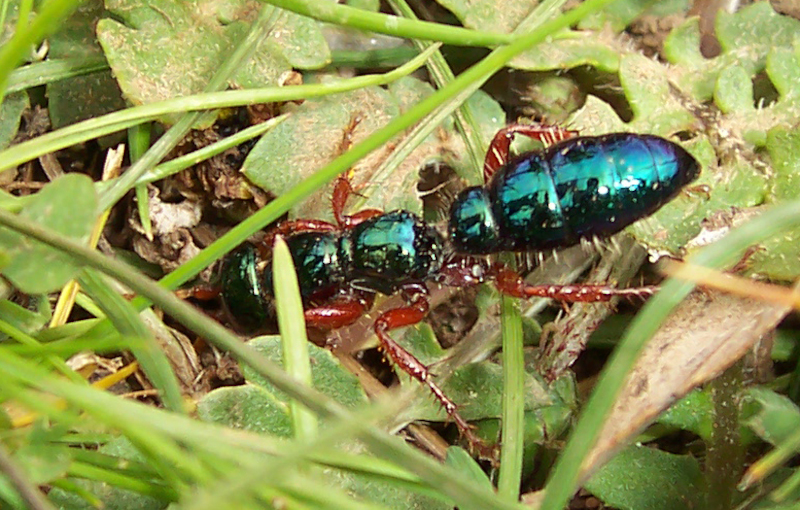Bluebottle Ant Facts
- Without a doubt, the most noteworthy fact about the Bluebottle Ant remains the confusion over its name. This bi-colored insect is actually a type of parasitic wasp. Many varieties of flower wasps have a wingless gender, and this also holds true for them.
- Not incidentally, it has only a moderate habitat range, however. Like many other insects, this makes it vulnerable to habitat loss and climate change. Yet its numbers appear to be stable for the moment. Therefore, the IUCN does not currently list it on the Red List of Threatened Species.
- While it has the ability to sting, the venom does not normally pose a danger to humans, though a strong burning sensation usually accompanies stings. Yet individuals remain capable of multiple stings if irritated, and these can occasionally cause an allergic reaction known as anaphylaxis.
Related Articles
Bluebottle Ant Physical Description
The beautiful yet deceptively named Bluebottle Ant often gets mistaken for a large ant.
Sexual dimorphism also appears in this wasp, with the females being larger than the males. Females average a body length of 1 in (2.5 cm), while the smaller males only average 0.5 in (1.25 cm) in length.
However, size alone does not separate the genders in this invertebrate. While smaller, the males have wings, and spend much of their time on flowers, while females remain grounded.
Its coloring remains its most distinctive feature. The bodies of both genders display either a bright metallic green or bluish color. In addition, the legs typically are a bright red.
- Kingdom: Animalia
- Phylum: Arthropoda
- Class: Insecta
- Order: Hymenoptera
- Family: Typhidae
- Genus: Diamma
- Species: D. bicolor
Bluebottle Ant Distribution, Habitat, and Ecology
Firstly, the distinctively colored Bluebottle Ant is a solitary animal and is solely endemic to portions of south and southeast Australia. This range includes New South Wales, Tasmania, and Victoria. Most notably, individuals primarily inhabit regions of forests, woodlands, and even urban areas.
Also, mating occurs in the air, while the smaller winged male carries the larger female. After mating, the female excavates a burrow for the eggs and hunts for ground dwelling insects. These she paralyzes with her sting and leaves as food for the larva.
Finally, while the larva of this invertebrate feeds on the paralyzed insects left by the mother, the adults mainly feed on nectar. Due to this, the insect plays a significant role in pollination in its region.
Species Sharing Its Range
Check out our other articles on 6 Magnificent Carnivorous Plants, Greater Sage Grouse, Barndoor Skate, Golden Armadillo Lizard, Orange-belted Bumblebee, Australian Sea Lion, Indian Vulture

